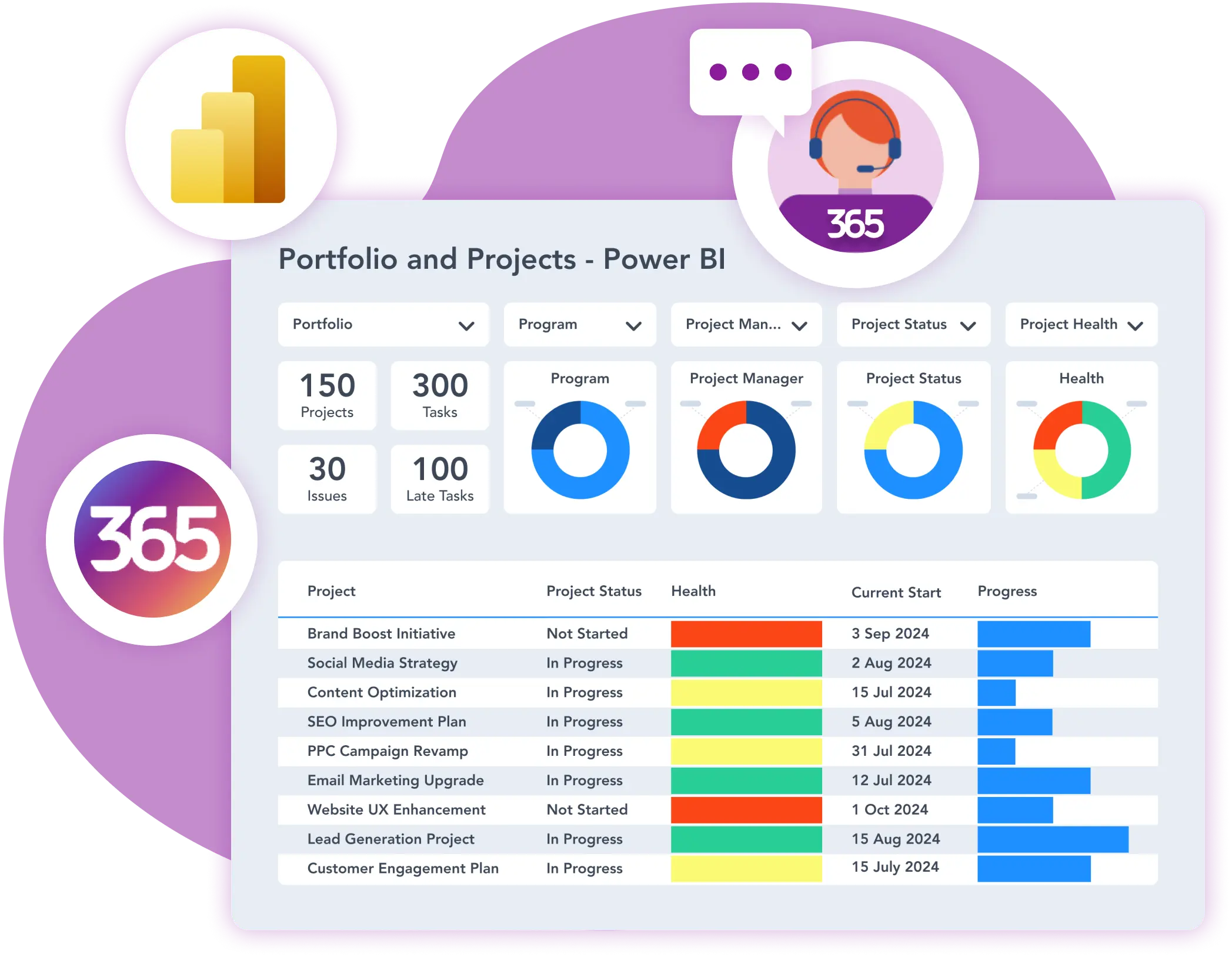Launching a project management office is a major endeavor. In this series of articles, I have outlined a five-step approach to make the journey easier.
The final two phases recommend a phased approach to implement the PMO and developing a cycle of continuous improvement.
How to Build a High-Performance Project Management Office (PMO)
An in-depth guide on setting up a PMO by leveraging your Microsoft 365 platform.

Implementing the Project Management Office
Once the PMO is established, you can start to move projects into a structure. The projects were selected during the second stage: Initiation, as you decided on the scope and services to offer in the first phase.
Launch your pilot set of approved projects, supported by clear plans for communication, change management, and governance.
You’ll also want to plan and track the resources of your team. As you implement the Project Management Office, there are going to be new duties and new responsibilities for various individuals.
At BrightWork, we use the ‘Start-Evolve’ approach with our customers; the same principle applies to PMO implementation. Our Approach is the result of close to three decades of collaborating with organizations, large and small across the globe, to improve their project management processes and practices. We use the Start-Evolve approach to help the customers deploy project management in phases and progress at a pace suited to their teams and business goals.
- Start quickly by adopting a sufficient amount of project management with configurable best practice project management templates and processes you need for projects and portfolios. This will give your senior leadership the immediate visibility to exercise control over the entire portfolio
- Evolve by gradually and continuously adding and maturing your project management workflows, processes, and practices at a pace your groups need and can absorb. With this approach, teams have time to become comfortable with new ways of working and enjoy success quickly.
As teams become more confident, you can build on a solid foundation with more projects and complexity, leading to more predictable, timely, and successful outcomes for your entire portfolio of projects.
Continuous Improvement
Once the PMO is operational, schedule some time for a feedback session with the team.
Find out what they like or don’t like, and want to improve, add, or remove.
You will likely only have a short window of opportunity to prove the value of the PMO to the wider business, making improvement and innovation key to your success. Here’s a read on PMO best practices recommended at BrightWork when deploying the BrightWork 365 project management software.
According to the Project Management Institute, PMOs that regularly seek and implement feedback tend to be highly important to their organizations.
Within your PPM software, create a backlog for feedback and suggestions for managing projects you would like to try or evolve to.
These can cover additional changes that people want to make to forms, scheduled reports, additional scorecards configured with KPIs, or other elements.
In time, seek feedback from stakeholders and customers.
Look back at your notes from the initial assessment and select some common project management challenges within the organization to tackle. This will help to embed the PMO within the business whilst also establishing credibility for the PMO team.
Areas to consider include:
- Portfolio alignment with business goals
- Risk Management
- Benefits Management
- Cost Management
- Project management certifications
- Knowledge Management
- Metrics and Reporting.
As the team experiences some project management success, you will want to evolve to more sophisticated processes.
Be sure to maintain clear standards during periods of change and improvement.
You need to balance flexibility with standardized processes, especially for reporting.
Launching a Project Management Office Series Recap
This article is part of a four-part series, which looks at how to establish a successful PMO. If you wish to review the first three steps, just follow the links below:
Summary
A Project Management Office helps organizations to deliver the right projects at the right time in the right way.
Choosing the right tool and technology is key to the success of your PMO. Identify a platform where you will not have to make a whole new investment to extend capabilities. A flexible, configurable tool will help you easily evolve and adjust your processes as your PMO matures and takes on more complex projects.
The BrightWork 365 project portfolio management tool built on the Power Platform has everything you need to launch a successful PMO.
In our free video demo, you’ll see how BrightWork 365 can help you to:
- Manage Projects with flexible templates, automated reporting, and collaborative team sites.
- Control Portfolios with project request management, real-time portfolio dashboards, and resource allocation.
- Leverage Microsoft 365 cloud with secure, scalable deployment in your existing environment.
Editor’s Note: This post was originally published in October 2015 and has been updated for freshness, accuracy, and comprehensiveness.
